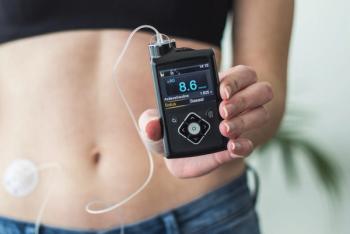
Investigational Immunotherapy for Peanut Allergy Shows Long-Term Clinical Benefit
Viaskin Peanut (DBV Technologies) achieved durable, long-term clinical benefit in peanut-allergic children.
Viaskin Peanut, an investigational peanut allergy immunotherapy being developed by DBV Technologies, achieved durable, long-term clinical benefit in peanut-allergic children, according to new results from a phase 3 study.1
Viaskin Peanut is a non-invasive, once-daily, epicutaneous patch designed to potentially reduce the risk of life-threatening allergic reactions due to accidental exposure to peanuts. The FDA accepted the supplemental Biologics License Application for review in October 2019, with a target action date of August 2020.2
The safety and efficacy of Viaskin Peanut was evaluated in the PEOPLE phase 3 open-label extension study in peanut-allergic children ages 4 to 11 years old over a 3-year period. Based on the findings, Viaskin Peanut demonstrated long-term clinical benefit as shown by an increase in eliciting dose (ED), which may decrease the chance of reacting to an accidental peanut exposure.1
In the study, 198 children who have completed the phase 3 PEPITES trial opted to enroll in the PEOPLE trial. Of these children, 148 completed were considered completers after 35 months and 141 patients completed all treatment. Individuals were randomized to receive Viaskin Peanut 250 μg.1
The results showed:1
- After 3 years, 51.8% of patients reached an ED of at least 1000 mg peanut protein, an increase relative to month 12 (40.4%).
- 13.5% of patients completed the food challenge without meeting stopping criteria at 3 years(cumulative dose of 5444 mg).
- At 3 years, the mean cumulative reactive dose was 1768.8 mg (median 944 mg) compared with 223.8 mg (median 144 mg) at baseline.
According to the study, the safety profile of Viaskin Peanut was consistent with that observed in the clinical program to date in over 1000 patients. The most common adverse effects reported in the study were mild-to-moderate skin reactions localized to the administration site and there was no epinephrine use deemed related to treatment.1
During treatment, 1 patient experienced a case of mild anaphylaxis that was determined to be possibly related to treatment and resolved without treatment. A mean 98% treatment compliance was observed over 3 years of treatment.1
“These new long-term data support the overall clinical benefit of Viaskin Peanut that we’ve observed to date in phase 2 and 3 clinical trials,” principal study investigator David Fleischer, Director, Allergy and Immunology Center and Section Head, Children’s Hospital Colorado, said in a statement.1 “We are particularly pleased to see that approximately 3 out of 4 patients showed an increase in their eliciting dose over 3 years, regardless of their individual baseline, with roughly 1 in 7 patients able to consume 5444 mg peanut protein without reacting during the month 36 oral food challenge.”
In exploratory analyses, Viaskin Peanut also demonstrated a sustained effect even during a period without treatment. Patients who received an ED of ≥1000 mg at 3 years continued the study for 2 additional months without treatment while maintaining a peanut-free diet. At the end of this period, the analysis showed that 77.8% of the children who completed the oral food challenge for 2 additional months maintained desensitization with an ED ≥1000 mg.1
If approved, the treatment would be the first epicutaneous immunotherapy indicated for peanut allergy in children, according to DBV Technologies.2
References:
- DBV Technologies Reports Positive Three-Year, Long-Term Data from the PEOPLE phase 3 Open-Label Extension Study of Viaskin Peanut in Children with Peanut Allergy [news release]. DBV Technologies’ website.
https://www.dbv-technologies.com/wp-content/uploads/2020/01/dbv-technologies-reports-positive-three-year-long-term-data-from-the-people-phase-iii-open-label-extension-study-of-viaskin-peanut-in-children-with-peanut-allergy.pdf . Accessed January 10, 2020.
- DBV Technologies Announces FDA Acceptance of BLA filing for Viaskin Peanut for the Treatment of Peanut Allergy [news release]. DBV Technologies’ website.
https://www.dbv-technologies.com/wp-content/uploads/2019/10/dbv-technologies-announces-fda-acceptance-of-bla-filing-for-viaskin-peanut-for-the-treatment-of-peanut-allergy-10.4.19.pdf . Accessed January 10, 2020.
Newsletter
Pharmacy practice is always changing. Stay ahead of the curve with the Drug Topics newsletter and get the latest drug information, industry trends, and patient care tips.




































































































































